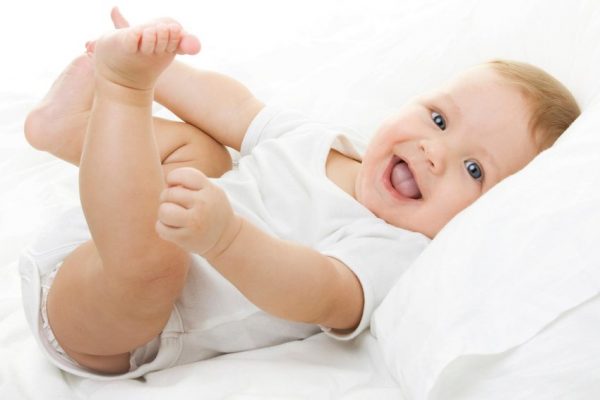Caring for infants. How to take care for your newborn?
Pregnancy, anxiety about the upcoming birth, the difficult day of childbirth — this phase is over and a new period begins for a mother — again unknown and therefore frightening. A new stage is the first year of your baby’s life, when you need to study caring for infants. Young parents have many questions in this regard. A lot seems too complex and unpredictable in infant child care, because the baby is still very tiny, and you think that any of your careless movements can lead to a disaster. Sometimes it is scary even to take the baby wrong. Therefore, you are to master caring for infants.

Even if you are an inexperienced mom, call on your maternal intuition — that feeling of your baby, which emerged during pregnancy and rapidly manifests itself after the birth. Сlose relationship between the mother and the baby helps to understand the child’s needs. The younger the child is, the more he needs to feel secure and confident. You should be always ready to help. As for the father, he should communicate with the baby to understand the little creature — that will help him to learn how to care for infants.
Here is some practical advice on infant care.
The newborn’s regime
The first thing to do is to set time for the morning hygiene: washing, eyes, nose and ears cleaning, and umbilical cord treatment. Do not begin these procedures immediately after the baby wakes up — the newborn will certainly protest against such «violence». Give the child time to wake up. Mum and dad should be in good mood in the morning; otherwise, the baby will feel the negative emotions and will always misbehave during morning hygiene.
It’s highly advisable that your baby would have routine during the day. It’s up to you to decide whether the regime will be strict or not, but still it’s important for your baby to feel safer and to begin to understand basic things. Routine will also be helpful for the mother while caring for her child.
At first the newborn’s routine is quite simple, there are two things in baby’s life — sleeping and breastfeeding.
A healthy baby is fed seven times a day; the interval between feedings is about three hours in the daytime, and up to 6 hours at night to sleep. I don’t know what is better: to feed you baby on demand or on schedule, I have some personal thoughts about it and will write them down in a separate article, but still it’s important that your baby eats at least 6−7 times a day.
You should know that your newborn baby can sleep up to 20 hours a day during first weeks of life, then less. A baby’s biorhythm is very unpredictable, however, in most cases, the most long lasting sleep is in the period from midnight till 4−5 am.
The best sleeping positions for the baby are on the tummy, on side, and on back. Try not to let your baby sleep on the tummy and on the back under no control from you — it can be dangerous. So let him or her sleep in these positions in the daytime. At night, it’s better for the baby to sleep on side — first right, then left. Don’t forget to turn your baby from time to time — otherwise, the newborn’s head may become asymmetric. Newborn’s pillow should be flat; you can even use no pillow at all.
In newborns urination may occur 20−30 times a day (my son had less, so don’t panic), and defecation — up to 10 times (2−3 is also a norm). Keep this in mind as wet diaper can cause the baby’s restless behavior, poor sleep, additionally, it is a breeding ground for bacteria.
Caring for infants. Washing and bathing a newborn.
Take warm boiled water, infusion of chamomile or calendula. Using a cotton pad, gently wipe the baby’s forehead, cheeks, nose… Eyes should be wiped from the outer corner to the inner, each with a separate pad.
Talk to your doctor when you can start bathing your child. Often, when the umbilical cord heals poorly, the doctor won’t recommend you to start bathing. Most children like bathing. Warm water soothes them and helps to fall asleep. It’s better to bathe the baby in the evening before feeding. You can bathe the newborn every day. Up to 1 month, it is better if the water is boiled. Do not bathe the baby, if he has a fever or any pustular skin diseases. Wash the tub before using, and then pour water into it. Measure the water temperature with a special thermometer. The water should be 37−38 degrees. You can add some therapeutic substances (starch, sea salt, pine extract, chamomile etc.) into the water, but first consult your doctor.
Lay the baby into the bath: first legs, buttocks and then the torso. For the first time you can put your newborn into the water in a swaddling clothes — it’ll be less frightening for the baby. The water level should not be higher than the upper part of the baby’s chest. Baby’s heart must be above the water. The duration of bathing ranges from 3 (at the very beginning) to 15 minutes. After the bath, the child should be rinsed with clean water. Wipe your baby with gentle movements. Infant care can be fun!
How to choose soap and shampoo
The skin of a newborn baby is very delicate. Choosing soap, buy one that is made specially for infant. There are a lot of brands of baby soap. While using a new brand of soap, try it on a small area of the baby’s body. If in some time redness appears on this site, do not use this soap. You should not use soap often; otherwise, the baby’s skin may get irritated. You should also buy special kid shampoos, they contain fewer additives. After bathing feed and put the baby to bed.
How to care for infants: nose cleaning
Take two cotton swabs — for each of the nostrils. Slightly wet the swab with special oil for babies’ skin care; gently clean the walls of the nasal passage. If breathing is free, don’t use oil — boiled water is enough.
Umbilical cord care
On average, umbilical cord heals for 3−4 weeks. You should drip 2−3 drops of hydrogen peroxide 3% 2 times a day. Wait a bit, while bubbles are formed then remove the rest of peroxide with a cotton pad. Tip: for best healing provide the umbilical cord with access to air.
How to prevent diaper rash in baby
Wash the baby after each bowel movement. After urination, it’s enough to use wet baby wipes. It’s recommended to wash the baby with running water from front to the anal hole not to infect the urethra. While washing you can use baby soap, baby gel or foam, but not every time, because you can wash off protective greases. Baby cream or oil will prevent skin irritation and dryness. In newborn girls slimy or bloody discharge from the genital tract may appear This is a response to the mother’s sex hormones. At this time, the girl must be washed several times a day in addition to the required washing after defecation.
In most cases, diaper rash appears on the buttocks and groin folds. The cause of skin irritation is the effect of moisture and friction, as well as urine and faeces, which contain bacteria. Diaper rash can be prevented by following a number of recommendations for skin care in the area of the diaper.
Diaper rash revention
In order to prevent diaper rash on a baby’s skin, you should thoroughly clean the buttocks and folds every time you change the diaper, because there, the secretion of sweat glands and dead skin cells accumulate. They can serve as a nutrient medium for bacteria. Wash the skin with running water, using any baby liquid cleanser. Make sure that the cleanser does not contain alkaline soap components, which cause dryness. After washing, do not wipe, just blot the baby with a soft cloth or napkin. Special baby wipes can also help to care for your infant.
While changing the diaper let the child air bathe. All children react differently to the change of the ambient temperature, therefore the time for air bathing may vary individually. Initially, you can leave your baby undressed for 2−3 minutes, it is better to lay him on the stomach. Over time, you can increase the duration of air bathing.
Every time you change baby’s diaper, use protective cream. Apply it on clean skin in a thin layer with gentle stroking movements. Baby cream prevents chafing and provides a secure and breathable barrier that protects the baby’s skin against any contact with urine and feces.
You should change diapers at least 6−8 times a day, regardless of the manufacturer’s recommendations. Most modern disposable diapers are made of soft and breathable materials and are safe for children.
Diaper rash treatment
The above measures, as a rule, are enough to prevent diaper rash. If the baby still has irritation on the buttocks on elsewhere, try changing the brand of diapers. Perhaps your child has individual intolerance to the components of the absorbing layer of the diapers you use. If this does not help, you should contact the pediatrician. Later I’ll write about some wonderful methods of treatment that helped my baby.
Redness and rashes under the diaper can be caused not only by violation of skin care rules, but also by problems with bowels or by allergic reaction. Therefore, any persistent irritation on baby’s skin must be a reason for going to the doctor.
How to dress your newborn baby
Baby bodysuits are very convenient: they do not pull up and form folds. For changing a diaper just undo buttons and remove the used diaper. I know only one rule of dressing your baby — don’t be afraid. Nothing will go wrong. Your newborn is not so fragile, as you think, certainly you should be careful while dressing, but do it with no fear!
Nail care
Learn the fact that your baby’s nails of will grow very quickly. That’s why they need regularly cut. Use special small scissors with blunt rounded ends. It’s simpler to cut the nails when your child is asleep, bud I didn’t do that and my baby learned the procedure very quickly and wasn’t afraid of it.
Newborn’s hair care
Despite the fact that some newborns have quite a bit hair, hare care is required. Wash the baby’s head with special gentle baby shampoo with neutral pH not to cause irritating and drying effects of the skin. Some herbs have positive: chamomile, sage and calendula have inflammatory effect: nettle and burdock root strengthen the hair roots. Use herbs with caution: some herbs can be allergic for your baby. Comb your baby’s hair. The comb you use must be from natural materials: wood or bone.
In the first months, seborrheic dermatitis may appear on the scalp. The most possible reason of it is an allergic reaction to milk fiber. In this case, you should exclude allergenic products from your baby’s diet and then lubricate baby’s head with baby oil a few hours before bathing, and after washing the head, comb the softened crusts.
Sometimes partial alopecia — usually on the back of the head — develops in babies. Usually the problem is that you don’t change the position of the baby. In such a case it is recommended to turn the baby periodically.
But the reasons may as well be quite serious:
- anxiety, caused by lesions of the nervous system;
- rickets, fungal or bacterial (purulent) infection;
- hormonal problems.
In all these cases, the child must be shown to the pediatrician.



